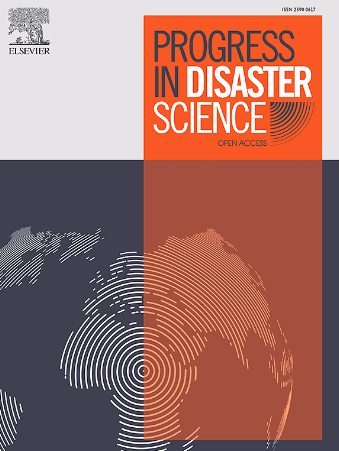考虑降雨统计特征的基于机器学习的城市洪水预测
IF 3.8
Q3 ENVIRONMENTAL SCIENCES
引用次数: 0
摘要
城市化增加了不透水的地表,而气候变化加剧了降雨,导致城市洪水更加频繁。传统的洪水预报数值模型精度较高,但由于需要大量的参数校正和数据处理,因而耗时较长。本研究通过提出一种使用随机森林模型的基于机器学习的洪水预测方法来解决这些局限性。通过利用过去的降雨数据、一维排水系统模拟和二维洪水分析,我们训练了该模型来预测各种降雨事件的洪水模式。为了提高预测精度,模型中加入了降雨的时间分布等统计特征。测试数据集的性能指标(RMSE、R2、MAE)显示,全降雨模型的RMSE、R2和MAE分别为3.1573、0.9682和0.9484,统计特征模型的RMSE、R2和MAE分别为2.7354、0.9761和0.8942。与数值模型相比,两种模型都显示出较高的预测精度,使用统计特征的随机森林模型的性能略有提高。这种方法提供了更快、更可靠的洪水预测,为紧急情况下的实时城市洪水管理和决策提供了有价值的工具。本文章由计算机程序翻译,如有差异,请以英文原文为准。
Flood prediction in urban areas based on machine learning considering the statistical characteristics of rainfall
Urbanization has increased impervious surfaces, while climate change has intensified rainfall, leading to more frequent urban flooding. Traditional numerical models for flood prediction are accurate but time-consuming due to extensive parameter calibration and data processing. This study addresses these limitations by proposing a machine learning-based flood prediction method using a Random Forest model. By utilizing past rainfall data, 1D drainage system simulations, and 2D flood analyses, we trained the model to predict flood patterns for various rainfall events. To enhance prediction accuracy, statistical characteristics of rainfall, such as temporal distribution, were incorporated into the model. Performance metrics (RMSE, R2, MAE) for the test dataset showed values of 3.1573, 0.9682, and 0.9484 for the total rainfall model, and 2.7354, 0.9761, and 0.8942 for the model with statistical characteristics. Both models displayed high predictive accuracy relative to the numerical model, with the Random Forest model using statistical characteristics showing slightly improved performance. This method provides faster, reliable flood predictions, offering a valuable tool for real-time urban flood management and decision-making during emergency situations.
求助全文
通过发布文献求助,成功后即可免费获取论文全文。
去求助
来源期刊

Progress in Disaster Science
Social Sciences-Safety Research
CiteScore
14.60
自引率
3.20%
发文量
51
审稿时长
12 weeks
期刊介绍:
Progress in Disaster Science is a Gold Open Access journal focusing on integrating research and policy in disaster research, and publishes original research papers and invited viewpoint articles on disaster risk reduction; response; emergency management and recovery.
A key part of the Journal's Publication output will see key experts invited to assess and comment on the current trends in disaster research, as well as highlight key papers.
 求助内容:
求助内容: 应助结果提醒方式:
应助结果提醒方式:


